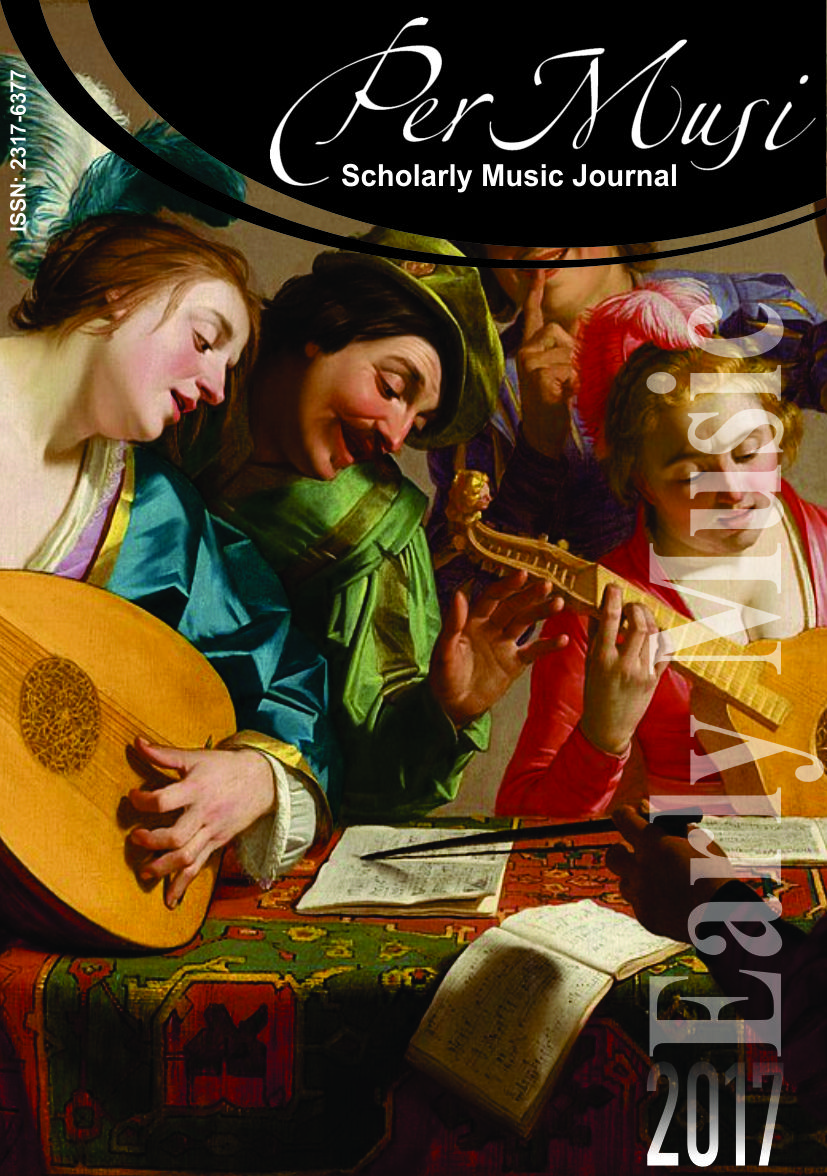Modulierende Präludia de Mozart: bizarria versus tradição perpetuada
Palavras-chave:
modulierende präludia de W. A. Mozart, stylus phantasticus, bizarria musicalResumo
A prática da experimentação sonora aos teclados foi marca preponderante nos séculos XVII e XVIII e vários Prelúdios foram escritos visando àquela prática. Mais tarde, incorporados como parte da dualidade Prelúdio e Fuga, visavam à execução improvisatória, mas se perpetuaram de forma independente em séculos posteriores. De simples atividade de controle para a afinação de determinado instrumento e/ou de sua capacidade expressiva, firmou-se como forma determinada em muitos estilos composicionais e em diferentes momentos. É curioso notar a inserção de barras de compasso que, contrariamente à sua natureza, impediu sua fluência e liberdade. Este estudo aponta para a retomada de sua gênese, no final do século XVI e, perpetuação nos séculos posteriores a inusitada proposta Mozartiana.
Downloads
Publicado
Edição
Seção
Licença

Exceto onde está indicado, o conteúdo neste site está sob uma Licença Creative Commons - Atribuição 4.0 Internacional.












